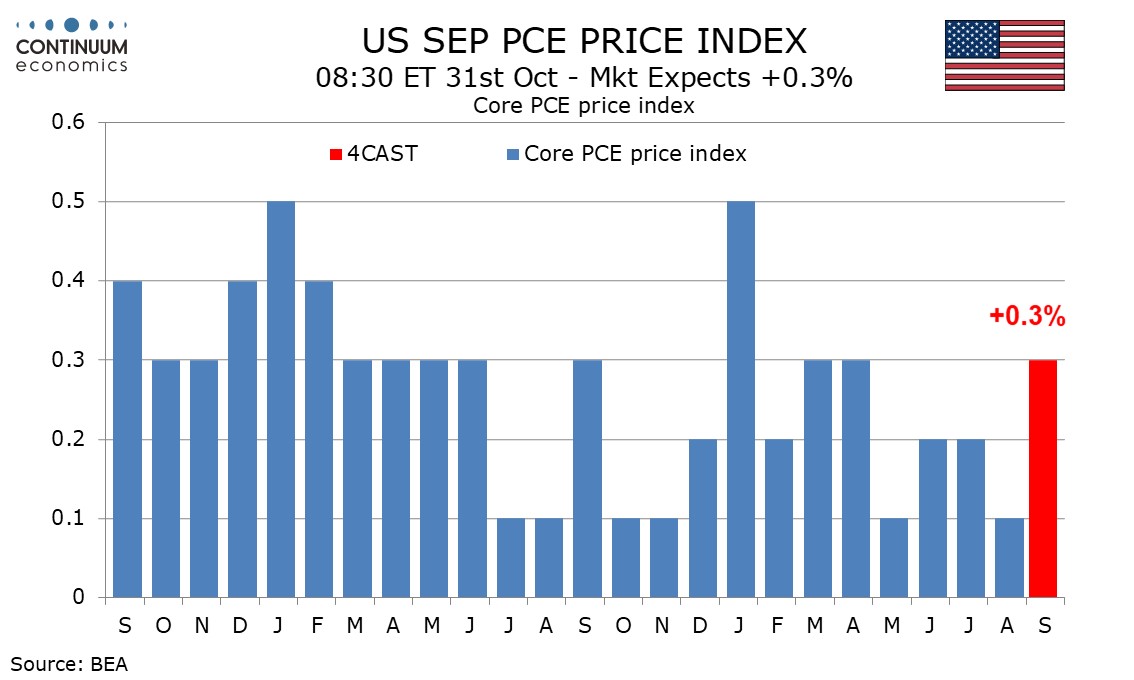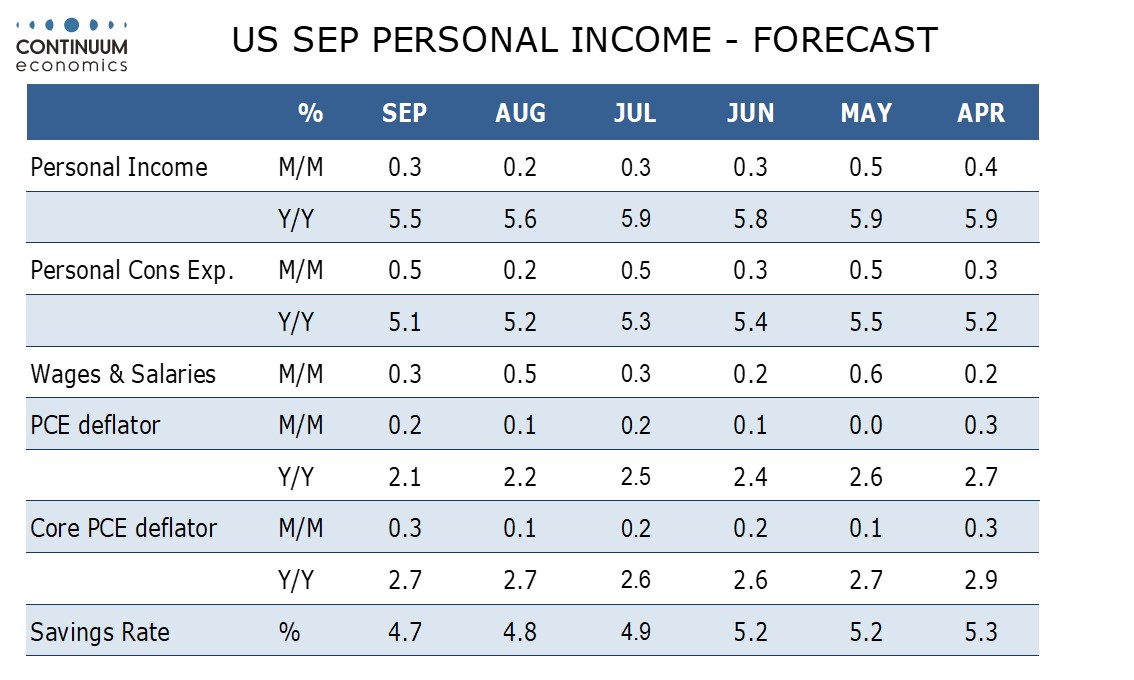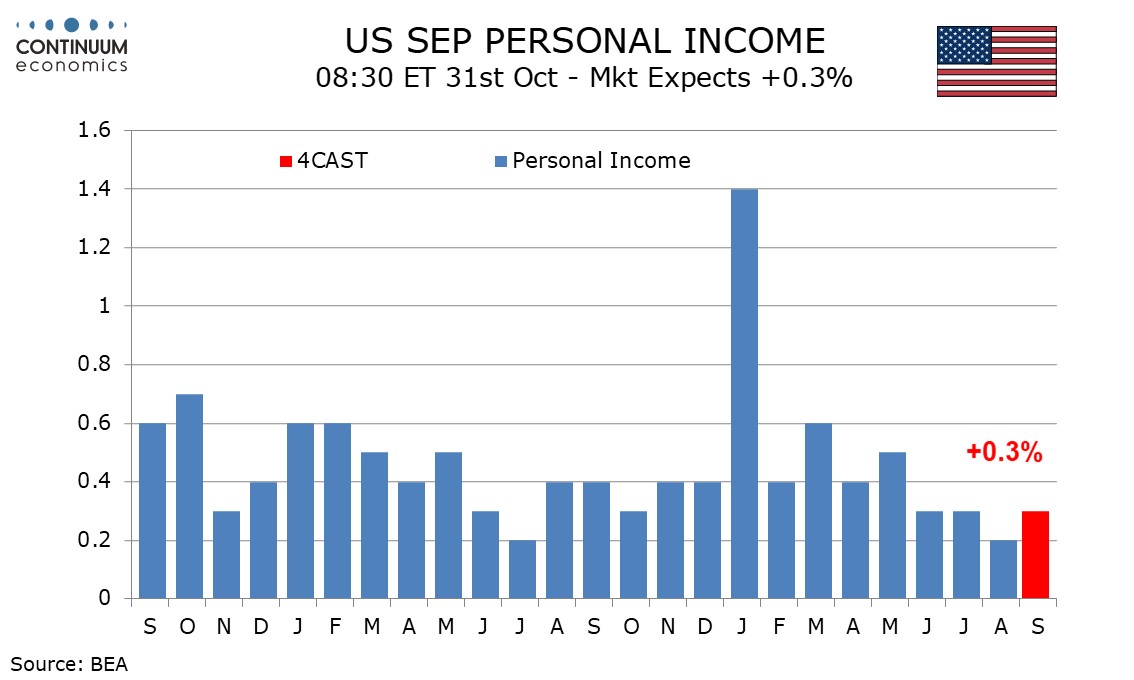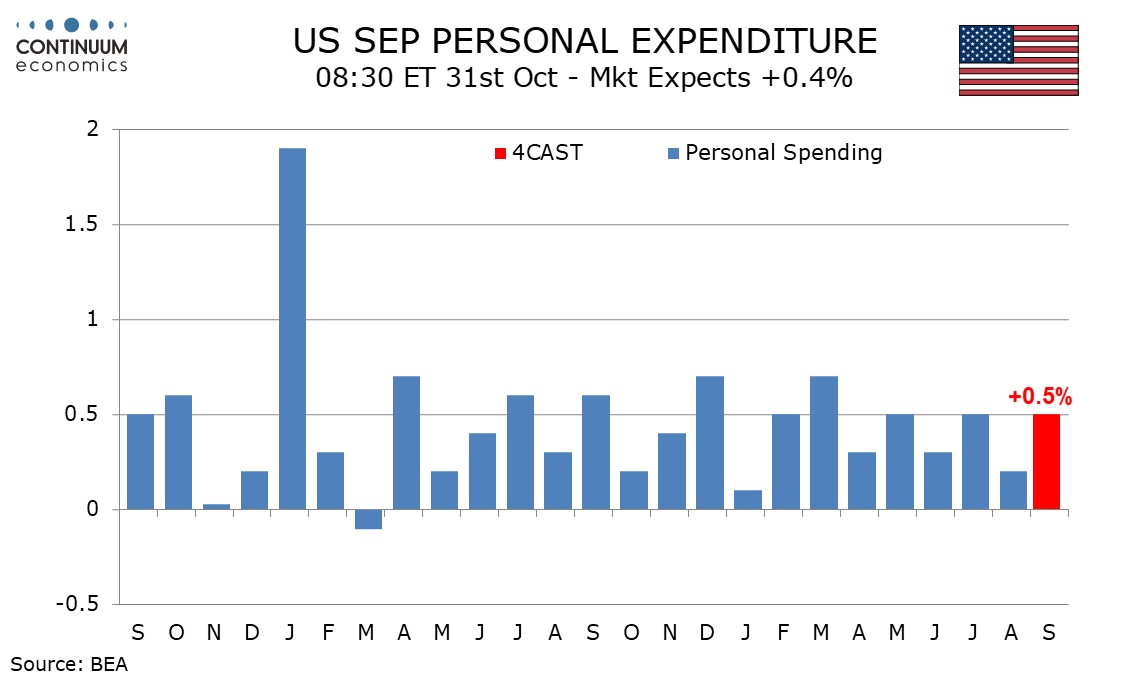Preview: Due October 31 - U.S. September Personal Income and Spending - Core PCE prices may match Core CPI this month
September personal income and spending data will confirm Q3 totals seen with the GDP release, with the only uncertainty being the mix of monthly changes and back month revisions. We look for a stronger 0.3% increase in core PCE prices, and a moderate 0.3% rise in personal income which we expect will be outperformed by a 0.5% increase in personal spending. The GDP totals suggest upward revisions could be seen, marginally for core PCE prices and more significantly for spending.
September’s CPI increased by 0.2% with a 0.3% rise ex food and energy, matching the gains of August. August core PCE prices significantly underperformed the core CPI with a rise of only 0.1% but we do not expect such a sharp discrepancy this time, with September’s core CPI gains being broader based than those of August, which were led by housing. Core PCE prices may even come in on the high side of 0.3% before rounding (as did core CPI) unless back month data is revised higher.

Similarly strong data a year ago will still allow yr/yr growth in core PCE prices to hold steady at 2.7% while overall PCE prices are likely to slip to 2.1% from 2.2%. There does appear to be some residual seasonality in inflation data even after seasonal adjustment so the fact September 2023 was above trend adds to the case for an above trend month in September 2024.

While September saw strong gains in the non-farm payroll and average hourly earnings, a dip in the workweek implies the gain in wages and salaries will be modest, we expect by 0.3%. We expect the other components of personal income to unusually match the rise in wages and salaries, correcting from an unusually sharp underperformance in August.

Retail sales rose by 0.4% in September, led by non-durables excluding gasoline which fell on lower prices. We expect a 0.5% increase in services, slightly stronger than in the preceding three months, largely due to stronger gains in prices. GDP data suggests consumer spending will rise by more than our 0.5% forecast, but some of the strength is likely to come in back month revisions.
